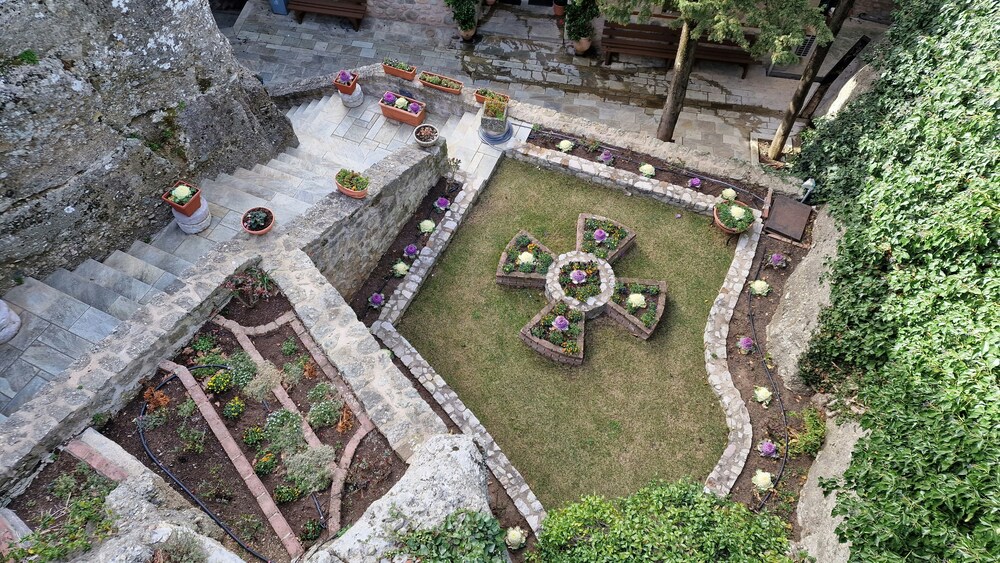- Home
- Articles
- Architectural Portfolio
- Architectral Presentation
- Inspirational Stories
- Architecture News
- Visualization
- BIM Industry
- Facade Design
- Parametric Design
- Career
- Landscape Architecture
- Construction
- Artificial Intelligence
- Sketching
- Design Softwares
- Diagrams
- Writing
- Architectural Tips
- Sustainability
- Courses
- Concept
- Technology
- History & Heritage
- Future of Architecture
- Guides & How-To
- Art & Culture
- Projects
- Interior Design
- Competitions
- Jobs
- Store
- Tools
- More
- Home
- Articles
- Architectural Portfolio
- Architectral Presentation
- Inspirational Stories
- Architecture News
- Visualization
- BIM Industry
- Facade Design
- Parametric Design
- Career
- Landscape Architecture
- Construction
- Artificial Intelligence
- Sketching
- Design Softwares
- Diagrams
- Writing
- Architectural Tips
- Sustainability
- Courses
- Concept
- Technology
- History & Heritage
- Future of Architecture
- Guides & How-To
- Art & Culture
- Projects
- Interior Design
- Competitions
- Jobs
- Store
- Tools
- More
Top Tips for Crafting Exceptional 3D Architectural Renderings

In the world of architecture, a picture is worth more than a thousand words. It’s the visual language that bridges the gap between architects and clients, translating intricate designs into vivid, tangible experiences. And that’s where 3D architectural rendering comes in. It’s not just about creating an image; it’s about telling a story, the narrative of the design.
Creating a captivating 3D architectural rendering is a blend of art and science. It starts with laying out the floor plan, customizing wall placements and room dimensions, and defining the exterior boundaries and terrain. But the magic truly happens when you mix media, combining different styles to highlight distinct elements or ideas.
However, the key to a successful 3D architectural rendering lies in communication. It’s crucial to maintain a productive dialogue with the client, clearly understanding their expectations and timeframes. After all, the goal is to create a render that not only impresses but also serves its purpose.

Table of Contents
ToggleUnderstanding 3D Architectural Rendering
Grasping the concept and significance of 3D architectural rendering carries immense importance, particularly considering its role in our previous discussion on visual communication in architecture. Delve deeper into this topic with us as we dissect its definition, different types and its significance.
What Is 3D Architectural Rendering?
3D Architectural Rendering categorizes under Computer-Generated Imagery (CGI), an offshoot application of computer graphics. It is synonymous with 3D Renderings, boasting a spectrum of uses that encompasses special effects in video games, films, commercials, art, and, importantly, the real estate market. The creation of all characters and objects in animated films, inclusive of big blockbuster animations such as Pixar, attributes to the resilient capabilities of CGI. A splendid example lies in the 2009 film ‘Up’ that used 3D rendering to produce its unique visuals.
Different Types of 3D Architectural Rendering
Multiple types of 3D architectural rendering exist, each catering to a different purpose or style. Mixed media renderings stand as one distinct type, merging two or more styles to represent several design ideas in a single image. It’s customary to use mixed media renderings to highlight unique elements or ideas, such as combining illustrations with a collage or a plan/sectional drawing. Given the nature of their production, it’s common to utilize various software to achieve the desired rendering.
The Importance of 3D Rendering in Architecture and Real Estate
The role of 3D rendering in architecture and real estate extends far beyond mere aesthetics. A well-executed 3D architecture render can aptly convey the experience and impact of the design to the viewer. The render’s style and its overall presentation should narrate the design’s story, creating a harmonious bond rather than distinct components. For real estate, if there’s a unique selling point of a property critical for the client, the render should ideally capture this element in its best possible light. Therefore, the right rendering enables architects to provide their clients a wide range of perspectives, helping their designs to stand out and their narratives to resonate with their viewers.

Preparing for 3D Architectural Rendering
Embarking on the creation process of any 3D architectural rendering entails a series of important preparatory steps. It encompasses everything from basic sketching of your plan to the arrangement of various 3D components and settings.
Sketching Ahead: The Foundation of 3D Rendering
Start with a sketch or floor plan to lay the groundwork for any 3D architectural rendering. Existing blueprints, if available, serve as excellent drawing guides. Alternatively, you can sketch a plan from scratch. Using design software, create plans for each room of your structure, specifying room dimensions, and assigning appropriate names. Add any necessary exterior elements such as boundaries, hedges, and patios, fine-tuning them to the desired height and elevation. This allows for the seamless integration of the architectural components with the terrain.
Setting the Stage: Foreground, Midground, Background
Remember to provide a complete representation of your architectural design. Incorporate detailing of the entire architectural structure from all sides and angles, including aerial views, to give a comprehensive overview. The division of your architectural rendering scene into foreground, midground, and background enables depth and perspective in your renderings.
The Role of High-Quality Components
High-quality components form the lifeblood of 3D renderings. From lifelike textures to realistic surfaces, the quality of your components plays a significant role in the end result. Additionally, remember the importance of light – where it falls, how it interplays with surfaces, and how it gives an overall realistic feel to the scene. Lastly, ensure the scalability and reusability of components for future projects and modifications. High-quality components ensure the longevity of your 3D architectural renderings. So, invest time and resources into creating and compiling superior assets to enhance your 3D rendering knowledge and skillset. By following these guidelines, you lay a solid foundation for high-quality output.

The Process of 3D Architectural Rendering
The creation of a compelling 3D architectural rendering involves a sequence of steps that require both artistic vision and technical expertise.
Building a 3D Model
The first crucial step in rendering a 3D architectural model involves layout creation. Uploading an existing file or creating a new layout from scratch, as seen in many tutorial videos on Youtube, serves as the foundation. Room dimensions, wall placements, and room names get customized at this stage, preparing the solid basis for exterior design, which includes defining boundaries and terrain.
Utilizing CGI Techniques in 3D Rendering
In the next phase, Computer-Generated Imagery (CGI) technology comes into play. References from the film industry, such as the visualization in the animated movie “up” show how CGI brings objects and characters to life. In a similar manner, CGI plays a crucial role in architectural rendering, adding depth and dimension to the project.
Mastering the Art of Lighting
After the CGI application, the art of lighting takes center stage. In any 3D architectural rendering, lighting significantly contributes to creating a realistic and memorable representation of the structure. Effective use of light and shadow shapes the ambiance and enhances the model’s overall visual appearance.
Adding Realistic Details
Moving on to the finer aspects, adding realistic details brings the architectural rendering closer to real-life. This step harbors tweaking elements such as grass areas, edges, patios, elevation of outlined areas, and more subtle characteristics. Miscegenation techniques, combining elements such as illustrations and collage or plan/sectional drawing with illustrations, contribute to these realistic details.
Creating a Beautiful Composition
As a final step, focusing on the composition enhances the overall impression. This can involve capturing different viewpoints, adjusting camera positions, and possibly including aerial shots. The magic in 3D architectural rendering comes alive at this point, where every aspect synchronizes to create an engaging, comprehensive, and beautiful visualization.
Tools such as V-Ray, Twinmotion, Lumion, and Enscape prove helpful in this process for their unique capabilities, according to many industry reviews. Saving these views ensures easy retrieval, and aids in sharing the remarkable results of the architectural rendering project in all its grandeur.

Incorporating Trends and Themes
3D architectural renderings step up their aesthetics by embedding current trends and maintaining a consistent theme. Let’s delve into how to capture these elements in your renderings to showcase your prowess in this intricate skill.
Keeping Up with the Latest Trends in 3D Rendering
Arising technologies continuously revolutionize 3D architectural rendering as creative ways evolve to depict structures most impressively. These waves of changes occur in technique, style, hardware and software. Staying updated with the latest trends not only adds value to the rendering but also maximizes the appeal of the design in today’s market.
- Explore emerging trends in 3D rendering which often arise from the most innovative rendering software. With the recent growth seen in augmented and virtual reality (AR/VR), 3D renderings should incorporate these advanced tools to offer clients new ways to visualize designs beyond static images.
- Follow industry leaders and cutting-edge studios that pioneer the path for trends. Larger companies, for instance, Pixar, frequently push boundaries in animation technology and renderings as seen with their work on animated films like Up.
- Attend industry events or architectural visualization conferences like the Architectural Visualization Day held in Sweden. These events offer goldmines of inspiration and updates on the latest trends and technologies.
Maintaining a Consistent Theme
A compelling 3D architectural rendering does not lose sight of the overarching project theme or style. It poses as a narrative device, translating the design story that the architect wishes to tell visually.
- Identify the project’s thematic elements, and express these consistently throughout your renderings. These themes can originate from color schemes to material choices or architectural styles such as modern, contemporary, or traditional.
- Utilize software that offers control over the fine details of the rendering, enabling the realization of the thematic elements in rendering. For example, using unique features of the Autocad suite to perfectly replicate the intricate woodwork and stonework in a Gothic theme rendering.
- Maintain scale, proportion, and perspective religiously. A consistent theme also means that no aspect of the design feels out of place or scale – small details like door handles and fixtures need to equally resonate with the theme.
- Use lighting strategies consistently as well, to provide a similar mood throughout the visual narrative. For example, the use of warm, soft lighting in a series of renderings can communicate a welcoming and comfortable environment underlying a ‘homely’ theme.

Tips and Tricks for Enhanced Realism
High-quality 3D architectural renderings hinge on not just technical proficiency, but the capacity for realism. Incorporating a natural touch makes these visuals more enticing and reflective of reality. Let’s explore some ways to accomplish this.
Embracing Natural Imperfections
Inject an element of authenticity into renderings by leveraging natural imperfections. Reflecting real-life scenarios heightens believability. For instance, asymmetry makes designs more familiar and engaging. Avoid rave reviews about placements along perfect lines or same angles. Instead, allow a slight disorder to mirror real-life scenarios. A slightly misaligned furniture piece or an asymmetric lamp position contributes to an authentic visual representation reminiscent of everyday settings.
Factors to Consider in Creating Realistic Materials
Pay attention to the quality and specificity of materials to exhibit a genuine aesthetic. The use of low-quality 3D models risks damaging the integrity of renderings. Thus, opting for high-quality 3D models proves beneficial. Regulations surrounding scale units and symmetry also play a significant role. When making designs, accuracy in scale and symmetry ensures adaptability to reality or printing. Poorly lit projects distort perspective and realism. Consequently, sufficient lighting is crucial in achieving a realistic project model visualization.

Using Varying Perspectives in 3D Renderings
Experimentation with different angles uncovers new artistic directions and adds layers of depth to your renderings. Examination of the rule of thirds and leading lines contribute to visually-pleasing images. Take advantage of diverse focal lengths for a variety of visual effects. Optimally align the angle with the rendering focus. If there’s a significant property selling point, put it under a flattering spotlight. Different lighting setups work well with different angles, so probe this aspect for tailored results. Giving your client a range of angles feeds into their vision and lays the foundations for successful goal achievement.
Avoiding Common Pitfalls in 3D Architectural Rendering
As we further delve into the realm of 3D architectural rendering, it becomes necessary to address some potential pitfalls. Recognizing and circumventing these common mistakes both enhances output quality and ensures the effective communication of architectural designs.
Avoiding Overuse of Wide-Angle Shots
The use of wide-angle shots indeed proves valuable in architectural rendering, offering a broad view of the project and adding a dramatic effect. However, overuse of these shots can lead to distortions, significantly altering perceptions of size and scale. Striking a balance is key. Mix wide-angle shots with other regular and close-up shots provides a more accurate sense of scale and detail. Thus, architecture comes across more realistically, effectively communicating the design’s nuances.
The goal we strive to communicate in this section underscores the importance of avoiding common mistakes. Understanding the critical balance between photorealism and realism, alongside the proper use of wide-angle shots, are mere fragments of the broader 3D architectural rendering picture.
Submit your architectural projects
Follow these steps for submission your project. Submission FormLatest Posts
Useful Tips for Planning A Backyard Layout That Feels Spacious
Creating a backyard that feels spacious can transform your outdoor experience, making...
American Architecture Styles That Shaped a Nation
Explore American architecture styles from Colonial to modern—key features, icons, and timelines...
How Environmental Planning Shapes Modern Architecture in Houston
Houston does not design buildings in a vacuum. Every structure rises inside...
Smart Steps for Repairing Your Garage
Keeping your garage safe and reliable is mostly about steady habits and...












Leave a comment